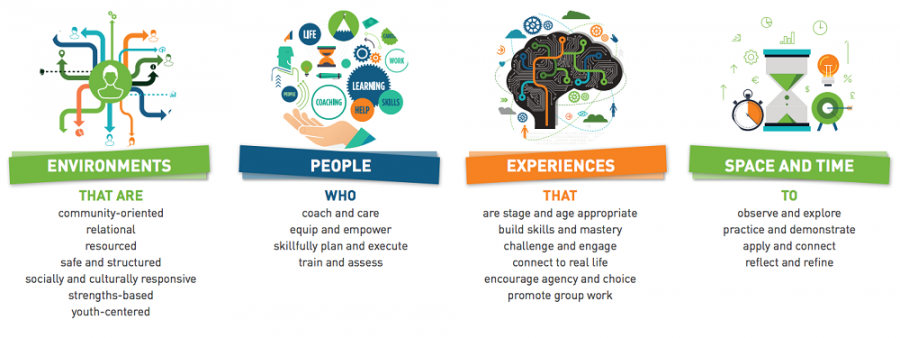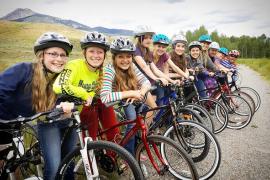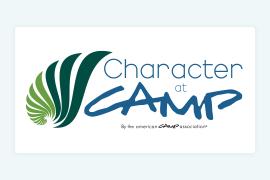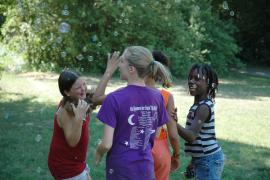Hi everybody! Thanks for joining me again for Part 2 of the summary of the Forum for Youth Investment webinar on social belonging for youth success. In Part 1, we discussed what social belonging is and why it’s important for youth to feel a sense of social belonging. Today, we will review social emotional learning (SEL) and some suggestions on how it can be used in youth programs. Hopefully this will kickstart your brainstorming session on how to incorporate this information into your own camp programming.
All right, let’s get right into it!
Social and Emotional Learning (SEL)
After Shannon Davidson (senior researcher at Education Northwest) gave listeners some general information about social belonging, President and CEO of the Forum for Youth Investment, Karen Pittman, joined the webinar to discuss a key idea regarding social and emotional learning (SEL). She suggested that rather than situating social and emotional skills in learning, refocus and frame learning as being social and emotional. Some examples of SEL skills include empathy, responsibility, emotion regulation, and initiative. If youth have not developed any of these skills, or do not feel socially and emotionally safe in an environment, they are unlikely to participate in activities and advance their learning. When adolescents don’t feel as if they belong, they are drained of energy and optimism. When as leaders we pump them full of positive feelings and potential, they will engage in the learning context and gain knowledge and skills that can prepare them for college, work, and life. It’s up to us as youth professionals to create a context that facilitates learning for all participants in our programs. Karen described the Readiness Practices as a tool that can be used to help professionals shape the four basic building blocks for their programs, and create learning environments where leaders care about more than simply the content that’s being taught, but also how young people feel about learning. Take a look at the image below.

As professionals we can use this tool to intentionally develop a positive environment, hire and train people, facilitate experiences, and create space and time so that youth in our programs have opportunities to develop abilities and skills that will help them become successful later in their lives. Think about how this framework can be used at your camp. How can you create an environment that is safe and structured, as well as strength-based and youth-centered? What can you do to train your people to coach and care, equip and empower? How can you facilitate experiences that are stage and age appropriate, while encouraging agency and choice and promoting group work? Finally, how can you create space and time for youth to observe and explore, practice and demonstrate?
Strategies for Incorporating SEL in your program
If these Readiness Practices are employed in your program and you still find that some youth do not feel a sense of belonging, Karen Pittman suggested two strategies to assist these children. First, change the environment to promote relationships and foster more belonging, or second, help youth perceive more belonging.
Promote relationships with individuals and the program. Emphasize similarities between participants and their peers or leaders. Practice inclusivity, empathy, mutual respect, and kindness. Foster a warm and welcoming physical environment – pay attention to the types of decorations you have and learning tools you use, including posters and books. Ensure your program is set in a location and community that is safe and unthreatening for all participants, regardless of age, race, ability, or sexual identity. Create formal and informal opportunities for everyone (including leaders!) to share their interests, aspirations, challenges, and even, something as simple as what’s happening in their personal lives. Everyone likes to learn more about one another and children love to see that their leaders are people too!
In regard to helping youth perceive more belonging, there are a lot of different activities that can be used to help youth see that a lot of people (both famous and “normal”) have struggled with fitting in and making connections with others. Activities such as “famous struggle stories” or “a letter from my future self” can help youth work through and understand their feeling that they do not belong. Use activities that help participants see the diversity in the program and acknowledge the various identities of those in the group (hint: camp activities do this pretty naturally with ice-breakers). Although it’s important not to minimize or invalidate the individual’s feelings, try and reinforce the fact that these types of feelings are common, situational, and transitory. Work these aspects into your programming for all participants, so that no one feels that they are intentionally being targeted. Besides, these activities can be fun and eye-opening for everyone!
Additional resources
Now that you know a bit about what belonging is and a bit of theory about how to incorporate it and SEL in your programs, I encourage you to take some time to think explicitly about what you can do. How can you include the Readiness Practices in your camp? In what ways could you use Karen Pittman’s two tips on facilitating belonging for youth?
If you want to learn more about this topic, check out The Future of Children and their recent publication about SEL. In additional, CASEL (Collaborative for Academic, Social, and Emotional Learning) has some great information about what SEL looks like in a variety of environments. For an example of a camp that focuses on SEL specifically in their programming, take a look at Camp EDMO.
As always, thanks for reading! And by the way, in case you read Part 1 and you’re wondering about how I fared at the rock climbing studio, the woman at the front desk smiled at me and said hi. I took that as a cue that even though I may not have looked the part, I still belonged. I didn’t let those feelings of anxiety and self-doubt win. I stayed and had a lesson, and then realizing I enjoyed it, I signed up for a month-long membership. I went a few times a week and when I didn’t have a friend to go with me, I bouldered. And yes, my hands ended up beat up and calloused, but I loved it. Turns out, especially when you employ implicit and explicit strategies to help people feel a sense of social belonging, you can teach an old dog new tricks!
Victoria Povilaitis, a research assistant for ACA, is a doctoral student at the University of Utah and has worked in the camp industry in a variety of roles, including staffing coordinator, athletic director, and sports coach.
Photo courtesy of Buckley Day Camp in Roslyn, New York.
Thanks to our research partner, Redwoods.
Additional thanks goes to our research supporter, Chaco.
The views and opinions expressed by contributors are their own and do not necessarily reflect the views of the American Camp Association or ACA employees.





